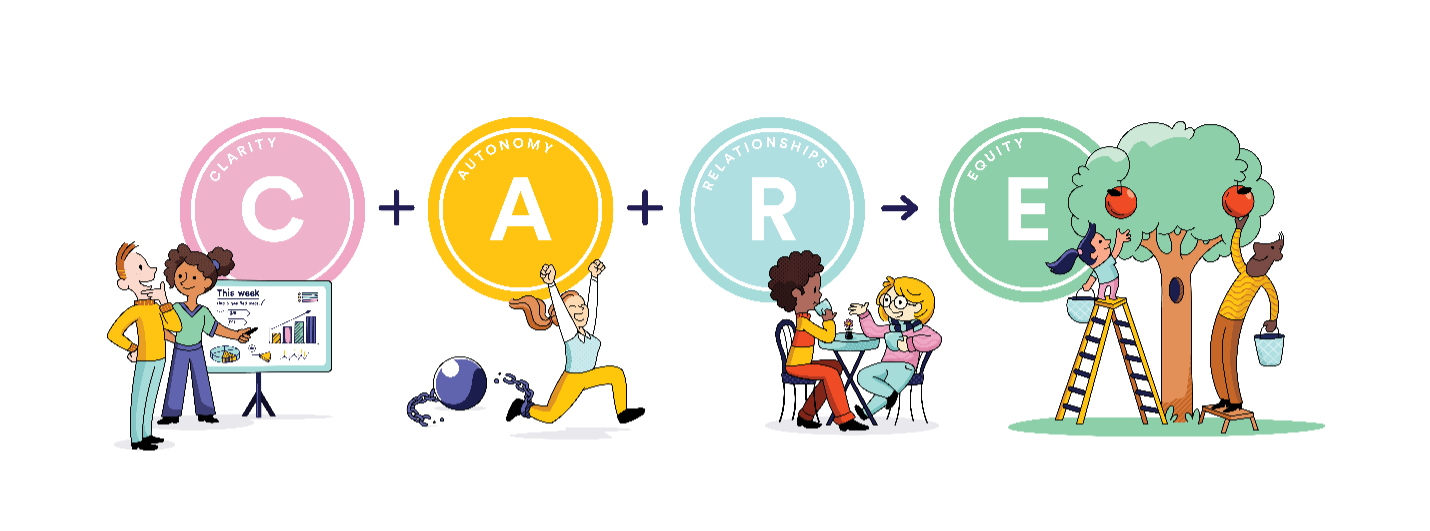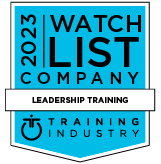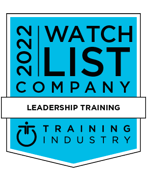Leadership Goal Setting: Strategies for Success in 2024

Contents
“A goal without a plan is just a wish.” Antoine de Saint-Exupery
It’s no good daydreaming about a clearer and better future.
When you are in charge, you need to give the entire company or team a true sense of purpose, spark greatness and higher performance in yourself and others, and keep motivation high.
Leadership goal setting serves as a beacon to guide leaders through the often-turbulent waters of people management. But it’s not just about having cowboy-level grit; how you go about leadership goal setting is critical.
The Essence of Leadership Goal Setting
Understanding the Impact of Goal Setting on Leadership and the Links to Clarity and Driving Both Intrinsic and Extrinsic Motivation
Leadership goal setting isn’t just about hitting organizational milestones and getting the right result. It intricately weaves into the fabric of human motivation too.
On an intrinsic level, clear goals fuel purpose, accomplishment and accountability. The less ambiguity the better. Ambiguity drives fear which is not good for intrinsic motivation. When clarity acts as a compass, and employees see the tangible results of their efforts, it sparks a sense of pride and fulfilment.
Meanwhile, extrinsic motivation flourishes as goals provide measurable outcomes, paving the way for successes worth celebrating. On a tactical level, how can you hold people accountability to something they are not clear on? Not much good happens when people who thought they were on the same line of the same page, were in fact in different books!
Aligning Goals with Personal and Organizational Vision
Make organizational goals and setting leadership objectives a shared pursuit, not just a leader's agenda. Involve your team in the process by conducting inclusive discussions and encouraging them to share their diverse perspectives. A shared goal creates common purpose versus a “my way or the highway” dynamic.
That way, leadership goals become motivating beacons that resonate with individual team members. These co-created goals intensify intrinsic motivation, leading to a synchronized, high-performing team.
Types of SMART Leadership Goals
“Effort and courage are not enough without purpose and direction.” John F. Kennedy
When you set SMART goals for leadership, and always have the big picture in mind, you don’t flap over the little things or trip at hurdles. You keep clear track of what’s happening, and what’s not. While we have all heard of SMART goals, they are rarely executed SMARTLY. The more time you put into effective goal setting up front, the more time you get back in effective execution versus always having to recalibrate on the fly.
Effective leadership strategies to weave in to your leadership goals for the year:
Enhancing Communication for Clearer Direction
Listening is more than just hearing words. On an average workday, we spend 45% of our time listening, but here's the kicker – only about 25% of it actually sinks in (Husman et al).
When leaders take it up a notch with active listening, articulating ideas clearly, and encouraging open dialogue and always repeating back what they heard to check for understanding, they create an environment where magic happens and everyone's humming the same tune. Clear communication becomes the glue, shedding light on strengths, struggles, reducing misunderstandings, and ensuring everyone knows their part in reaching shared goals. Clarity, Clarity, Clarity!
Fostering Decision-Making Autonomy
Constant micromanagement feels infuriating and demoralising for employees. It ignores the valuable perspectives and processes your team can bring to the table. 69% of employees considered changing jobs because of it (Harry E. Chambers).
Fostering decision-making autonomy is like handing out superhero capes to your squad, empowering them with the skills and confidence to make impactful decisions that save the day.
It’s not just giving the green light, it's fuelling ownership to fearlessly navigate challenges.
Strengthening Team Collaboration and Trust
Your workplace is a vibrant gallery, so get out of the manager’s office and take it all in. Be intentional in building relationships, discovering your teams’ strengths and weaknesses, knowing what motivates them, and prioritizing collaboration.
Adding this to your leadership development goals will foster trust and you’ll see what a unique work of art every person is. It blends talents into a collective masterpiece and keeps them humble.
Championing Equity in All Leadership Practices
Different team members will have different perspectives, viewpoints, and needs. So, take the time to listen to and consider them.
Leaders championing equity don’t just celebrate the fact we are all different but is integral for higher performance. So, every team member has a seat at the table, knowing each seat is slightly different, a voice that’s not only heard but valued, and an equal chance to shine.
Cultivating Emotional Intelligence for Better Interactions
"When you listen with empathy to another person, you give that person psychological air." Stephen R. Covey
EQ is more important for leaders than IQ in the modern workplace. Developing emotional intelligence is an ongoing odyssey of self-awareness and empathy.
A leader might encounter a disagreement within the team, but if cultivating EQ is one of your leadership development goals, a beautiful thing can happen. By delving into understanding the underlying emotions, a conflict can be transformed into an opportunity for constructive communication and connection. It establishes a culture where compassion and understanding serve as foundational pillars.
Promoting Continuous Personal and Professional Growth
It’s all too easy to get lost in the weeds of the day-to-day. But leadership requires green fingers, to craft a culture that’s a nurturing greenhouse for individual and collective development. It's a commitment to providing the nutrients of learning opportunities, mentorship, coaching, training sessions and regular check-ins that help your employees to grow and flourish.
93% or organizations are worried about retention, and providing learning opportunities is the #1 way they are working to improve it (LinkedIn). People who aren’t learning will leave. But 94% would stay longer at a company that invested in their career (LinkedIn).
So, make time to establish a culture of curiosity and continuous feedback (leaders: it goes both ways!), where challenges are viewed as stepping stones. Remember, no one is perfect, and no one was born to be an effective leader. We can all grow if given the chance.
Examples of Successful SMART Leadership Goals
Enhancing Communication
I will schedule 1-on-1s with one employee per week, to practice active listening and gather feedback, and aim for at least an 80% satisfaction rate on my communication.
Fostering Decision-Making Autonomy
Within six months, I will encourage team members to take ownership of tasks and projects that I currently own, and set up a check-in and support process, to ensure accountability and help me integrate coaching into my leadership style.
Strengthening Team Collaboration and Trust
In the next six months, I will develop personal connections with every team member, learn their individual strengths and challenges, what motivates them and use this knowledge to develop and tailor processes and establish collaboration opportunities.
Championing Equity
In three months, I will send an anonymous survey to employees asking if they feel valued, heard, and psychologically safe at work and strive for an 80% “yes” rate.
Cultivating Emotional Intelligence
In the next six months, I will engage in leadership development training to improve my emotional intelligence, and solicit feedback from direct reports on how I’m applying better communication and empathy, aiming for an 80% improvement rate.
Promoting Continuous Personal and Professional Growth
Within two months, I will learn to deliver feedback clearly and directly to employees on a weekly basis, and set up a Slack channel or weekly email to shout out employee wins.
Overcoming Obstacles in Leadership Goal Setting
Addressing Common Challenges in Setting and Achieving Goals
“The greater danger for most of us is not that our aim is too high, and we miss it, but that it is too low, and we hit it.” – Michelangelo
‘I felt so motivated before things snowballed. The road was longer and rockier than I thought, and I lost drive and focus, then procrastination set in. Now it’s a year later and I’m scared of failing again.’ Ringing any bells?
The most common culprits during leadership goal setting and striving:
Lack of clarity: Vague goals can lead to confusion, frustration, low motivation, and wasted time and resources. Communicate goals clearly and frequently to teams and provide feedback and support along the journey. On those days when it’s a chore to muster the effort, the “why” is what will push people over that wall.
Lack of alignment: It’s the way to conflict, disengagement, and poor performance. Involve employees in the leadership goal setting process, so they are not only consistent with the organization's mission, but reflect teams’ strengths, needs, and aspirations too.
Lack of a realistic plan: Dreams should be big, but set realistic time frames and don’t make leadership goals too complex or ambitious. Measurable milestones are key to avoid stagnation, frustration, and a feeling of failure creeping in.
Lack of Accountability: When we push ourselves to evolve, our brains don’t always like it: “You want to disrupt our ingrained habits and leave the comfort zone? Have some procrastination instead.” Willpower alone won’t hold the fort every day, so have people and resources in place to keep you accountable.
Unexpected Obstacles: Changing teams, extra workloads, budget cuts– when you’re unprepared and blindsided, it’s easy to fall off track. You don’t need a crystal ball to anticipate and plan for potential barriers, and it will help you avoid those quicksand moments.
Lack of Feedback: It’s the route to uncertainty, doubt and complacency, not to mention missed opportunities. Solicit regular feedback from all stakeholders, so you know if ‘wins’ are actually making a difference.
Lack of Flexibility: Rigid leadership development goals that aren’t responsive to changing circumstances, needs, or expectations can lead to resistance and become stagnant. Don’t carve things in stone – adopt a growth mindset, embrace change and uncertainty, and analyze and adjust as you go.
Seeing ‘Failure’: The best leaders have the courage to see mess-ups for what they are: learning curves. And curves are never straight lines that get you there the fastest. Step back and ask yourself and your teams: Why did this happen? How can we approach it differently? What are the wins so far?
Not Reviewing Progress: Some days it can feel like you’re not getting anywhere, but don’t be the hare to that tortoise that aced it. Set small sub-goals, establish clear indicators to track progress, and celebrate little wins.
Staying Resilient and Adaptable in the Face of Change
Overcoming our biases involves recognizing that each team member is on a unique journey. You can’t just assume that everyone is on the same line of the same page, and not in different chapters, or even worse, a different book!
Leaders must embrace over-communication. People need to hear things at least 6 times before it is really received and crystal clear in their minds.
‘X’ may mark the spot, but the terrain might shift unexpectedly. Resilience is not just bouncing back from setbacks but learning and growing from them. Unforeseen challenges may require adjustments in strategies and leadership goals, and this adaptive mindset ensures goals remain relevant and achievable.
It’s this symbiotic relationship between leadership goal setting and resilience where true leadership emerges, creating a cohesive narrative that binds people together, so everyone is fully immersed in that same story.
Leveraging the C.A.R.E. Playbook for Leadership Goals
Being a leader without leadership goal setting is like sailing a ship without having planned a course – you’re likely to end up adrift or stranded on a desert island with no clue what to do next.
CARE should be the beating heart of setting leadership objectives. If you lead with CARE for your people, they will care back. It’s more than a leadership training experience; The CARE Experienceâ is a playbook for higher performance. And it can be customised to your company culture, values, and the human issues and goals you want to solve and reach.
Clarity serves as a guiding star to empower individuals, Autonomy becomes the bedrock that builds capability, Relationships foster collaboration and trust that transforms teams into cohesive powerhouses, and Equity ensures that every voice is heard and valued and levels the playing field for all.

CARE inspires rapid change in how your leaders lead, behave, set and surpass goals, and DX’s ongoing support and hands on tools help make CARE a permanent part of how your leaders lead.
Contact us to learn how we can help you or your leaders in setting leadership objectives effectively, through CARE.
FAQs
Why is goal setting crucial for effective leadership?
Leadership goal setting is like the GPS for leadership success – it provides everyone with direction, focus, and a roadmap to turn leadership dreams into reality.
How can leaders ensure they achieve their development goals?
A careful blend of ambition, accountability, flexibility, inclusivity, plus a growth mindset, is the recipe for success.
How can DX Learning assist in achieving leadership development goals?
DX teaches leaders to become self-aware of their natural leadership style through a series of experiential exercises, so they walk away with practical knowledge and skills to apply immediately, setting and achieving goals that transform cultures and organizations.
Insights

Subscribe to Our Monthly Newsletter!
For managers and talent professionals who truly believe in putting people first, the CARE to Win blog is your gateway to the latest insights on human-centric leadership. Join us as we champion the people first movement.
Need some time apart? Are we emailing you too often? Just give us your feedback, and we promise we’ll respond. We really do care. And if it’s still too much, just unsubscribe. It’s cool.





